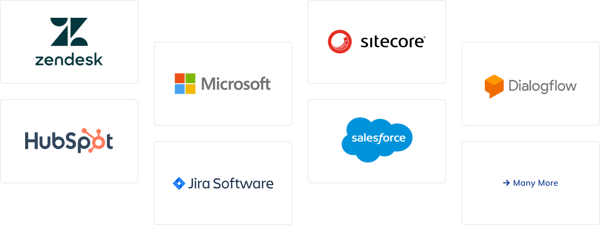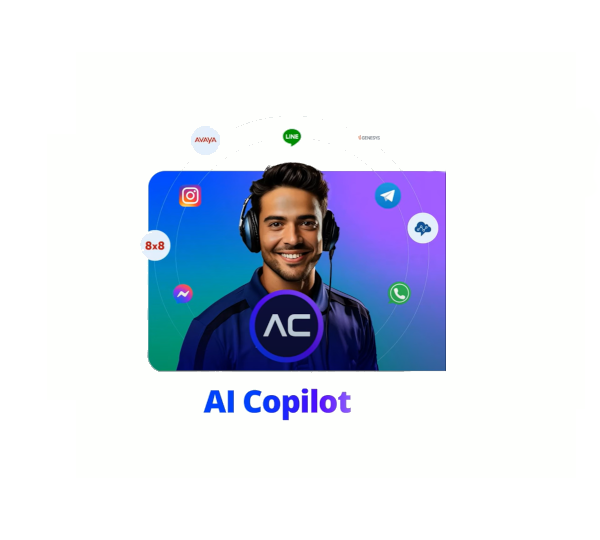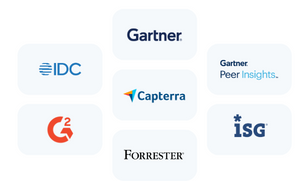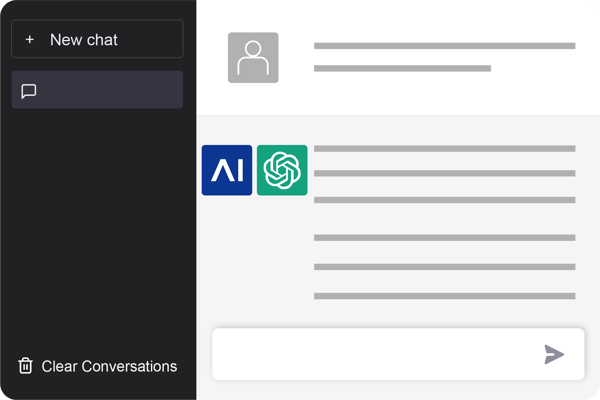Looking at chatbots and automation? We've gathered the best 9 questions from our RFI template to ask potential vendors.
Related content:
So you’ve decided to leap into the world of automation, or maybe you’ve done some limited pilot projects, proved a point or two, and need to roll out.
Your next step will be to assess a number of vendors of chatbot technology and automation platforms to ensure they have the capabilities that your business and contact center needs.
Every organization is different from a business, financial, organizational, and operational perspective. It means that not every vendor’s offer is going to be a fit. So it’s important to find one that is.
Here are 9 must-ask questions when you start talking to vendors:
1. Does your solution have a visual developer environment so that operations and non-technical people can create bots without having to code?
When it comes to creating virtual agents, the best people to do this are often those who work on the front line with customers. They know the questions that customers generally ask and what replies they need to be given to answer their queries as quickly as possible. Your ops people may not be technical experts, but they are masters at customer service and maximizing customer satisfaction – which is exactly what you want your bots to do.
2. Is your solution open source, proprietary, or a mix of both?
Open source software can be great, as you can potentially make it do exactly what you want, but only if you have a serious level of technical expertise and coding talent in-house, as well as the time to build your own solution from the ground-up. The sweet spot is a solution built on open source standards but supported by a strong vendor. This generally gives you a platform which is almost infinitely customization, easy to integrate with other software, and can be extended to offer whatever functionality you need.
3. How does your solution handle fail-over to a live agent?
Most chatbots and automated systems are built to recognize user inputs and then respond with pre-programmed responses. When a user’s intent is identified as falling outside of those the bot has been built to handle, it needs to fail gracefully. It’s important to understand how your proposed solution handles this, how it integrates with your contact center's voice or live chat platform, and what level of control you have over how and when the handover happens.
4. Can we build end-to-end customer journeys across channels?
Most chatbots are single-purpose and built to work on a single channel. It should be possible however, in a modern and versatile automation platform, to chain bots together in order to create entire customer journeys. Using nodes and endpoints (coding and API terms which allow systems to be connected together) it should be possible to create branching conversation trees that even take in multiple channels, such as passing the customer between voice and chat, or making an automated SMS follow up to a chat to check the customer’s query was correctly handled.
5. What is the process of training and building bots?
It should be possible for non-technical people to build agents entirely from scratch, and even add new integrations to your existing systems, without having to write a line of code. One reason for this is that it frees up time that your valuable (and probably expensive) IT people could be spending on other things. Another reason is that conversations, interactions, and customer journeys are better built by operational and front-line staff who understand your brand and customers and what the customer experience should look like.
6. What software do we need in our contact center to use your platform?
The ideal answer to this question is: Whatever you already have. In addition to integration with channels (see the next question), integrations with the contact center and back office systems are of course required for virtual agents to initiate activities like handing over to a live agent, scheduling a callback or follow-up SMS, and triggering a business process such as a dispatch, payment, or refund. When assessing a platform it’s useful to understand how many pre-built integrations it includes, and what tools and APIs are included so that you can build new ones.
7. What third-party integrations are possible with your platform?
Your potential vendor should support as many of the popular third-party channels as possible and also a healthy number of channel aggregators, right out of the box. Channel aggregators, such as DialogFlow, Azure Bot Service, RingCentral Engage, and Sunshine Conversations allow you to use their APIs to connect with a wide number of voice, chat, messaging, and social channels.

Furthermore, the platform you’re looking at should also be able to integrate with any number of different third-party tools and services you might wish to use for things like data management, analytics, and BI (business information).
8. Does your platform support machine learning and rules-based bots?
Most chatbots used today are rules-based, which means they are pre-programmed to recognize a number of intents and provide pre-programmed responses. No AI involved.
The second type of bot is a genuine AI Agent. Rather than all their responses being pre-scripted these types of agents are trained, usually on huge data sets, using machine learning and deep learning techniques.
If you know you will just need one type of bot, then it might be better to go with a platform that specializes in doing just that. If you prefer the flexibility of being able to adopt either approach then ensure your vendor supports both scripted bots and genuine AI agents.
9. How does your platform handle data?
Whether it’s customer data, transaction data, or interaction data, it needs to be secure and it needs to be analyzable so that your business and contact center can use it to constantly improve.
Data should be encrypted when it’s being transported anywhere – say from the AI platform to a back office database. Access to the platform should also be restricted to approved users each of which has only certain access rights. Ideally the platform should integrate with your single sign-on identity provider, ensuring compliance, consistency, and security across your whole organization.
Want to read more? Have a look at our RFI template for more important questions!

.png?width=60&height=60&name=AI%20Copilot%20logo%20(mega%20menu).png)




.png?width=600&height=600&name=Knowledge%20AI%20Feature%20image%20(2).png)














